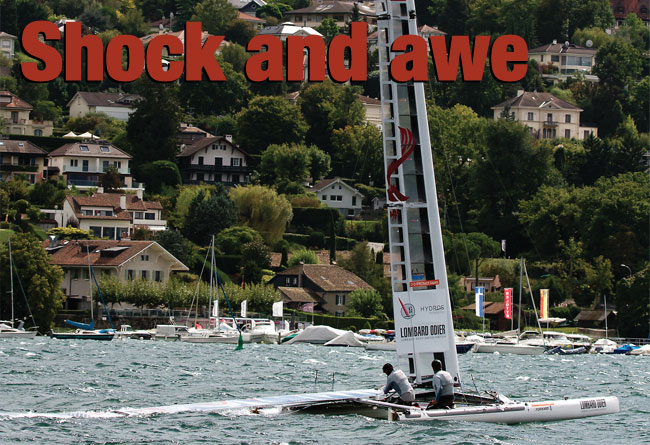
Things start to come apart for Steve Clark and Mike Costello in Geneva. But at first it all looked pretty good, before it looked not so good at all…
For as long as I can remember C-Class success has been driven by weight reduction. The contest was traditionally a fairly straightforward engineering and building exercise. Each boat incrementally evolved its aerodynamics and hydrodynamics, but the real action was in weight reduction. This allowed us to ratchet up the performance of the boats without having to learn any really new sailing techniques. Boats could be late to the water and quickly sailed to a high percentage of their performance.
a high percentage of their performance. This is no longer the case. We are currently in a realm where technique has to evolve fast and be relearned for each variation, and baseline expertise simply doesn’t cut it any more. Every new tech - nical challenge now demands improved yacht management and boathandling.
Groupama’s wing cants 9.5° to windward. Gstaad and Aethon both attempted to cant, but ran out of time to debug their systems and sailed with their rigs straight.
No other teams attempted to cant. Gstaad, Norgador and Groupama all had impervious 3Di trampolines that more or less sealed to the hulls and flexible gaskets which sealed the bottoms of their wings to the trampolines. Expect to see much more integration of the platform and trampolines into the wing design in the future.
We invite you to read on and find out for yourself why Seahorse is the most highly-rated source in the world for anyone who is serious about their racing.
To read on simply SIGN up NOW
Take advantage of our very best subscription offer or order a single copy of this issue of Seahorse.
Online at:
www.seahorse.co.uk/shop and use the code TECH20
Or for iPad simply download the Seahorse App at the iTunes store


